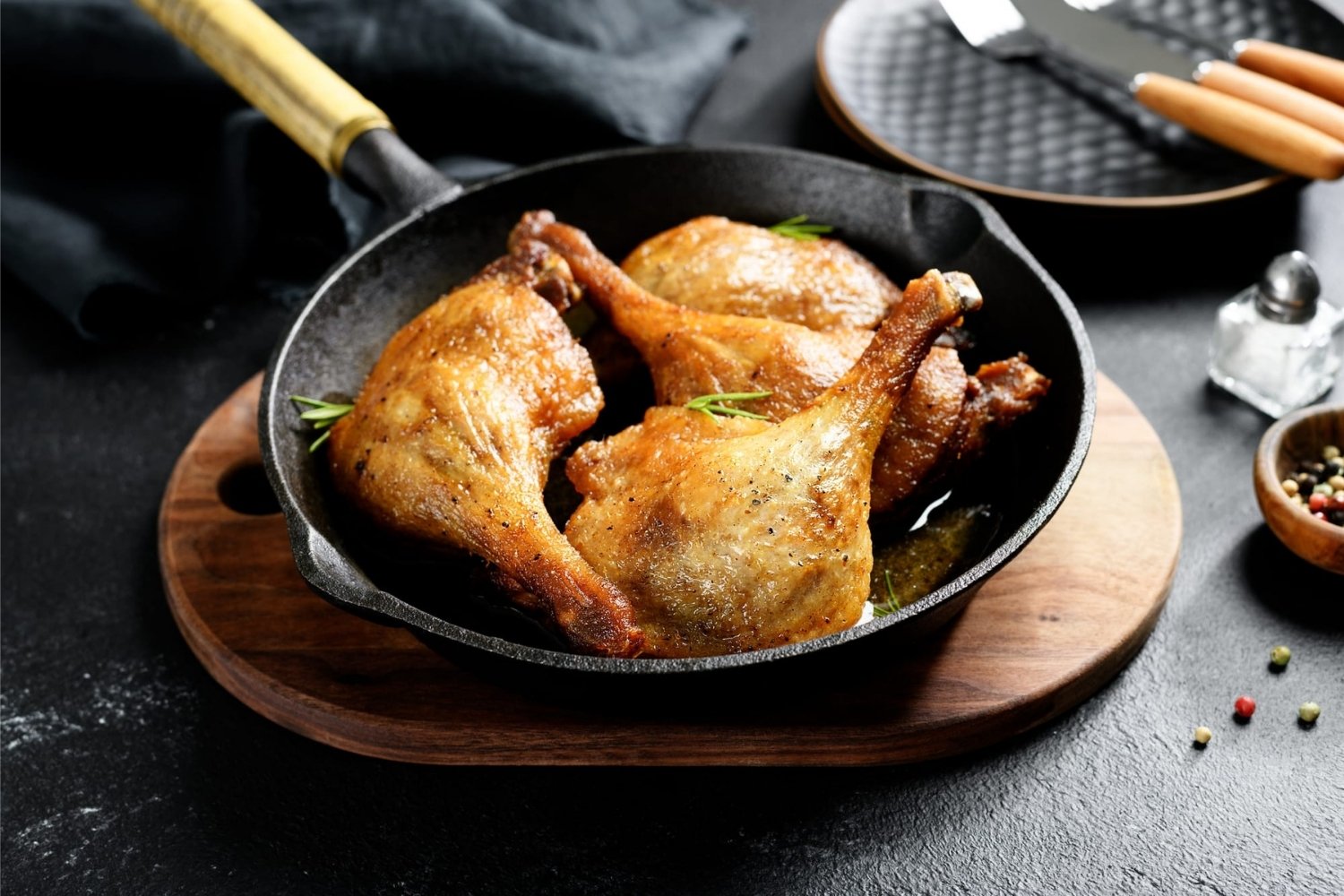
Confit is a traditional French cooking method that involves slow-cooking meat, usually duck or goose, in its own fat. This technique not only preserves the meat but also enhances its flavor, making it incredibly tender and delicious. Confit has been around for centuries, originating as a way to store meat before refrigeration was available. Today, it’s a beloved dish in gourmet kitchens worldwide. But did you know that confit can also be made with vegetables and fruits? From its historical roots to modern culinary uses, there’s a lot to learn about this fascinating cooking method. Ready to dive into some intriguing facts about confit? Let’s get started!
What is Confit?
Confit is a traditional French cooking method that involves slow-cooking food in fat at a low temperature. This technique preserves the food and enhances its flavor. Let's dive into some fascinating facts about confit.
-
Confit Origin: The word "confit" comes from the French verb "confire," meaning "to preserve."
-
Ancient Technique: This method dates back to medieval times when it was used to preserve meats before refrigeration.
-
Not Just Meat: While duck confit is famous, vegetables and fruits can also be confited.
-
Slow Cooking: Confit involves cooking food at a low temperature, typically around 200°F (93°C).
-
Fat Preservation: The food is submerged in fat, which acts as a barrier against bacteria and air.
-
Flavor Enhancement: The slow cooking process allows the food to absorb the flavors of the fat and any added herbs or spices.
Types of Confit
Confit isn't limited to one type of food. Various ingredients can be prepared using this method, each offering unique flavors and textures.
-
Duck Confit: Perhaps the most well-known, duck confit involves cooking duck legs in their own fat.
-
Garlic Confit: Garlic cloves are slow-cooked in olive oil until they become soft and sweet.
-
Tomato Confit: Tomatoes are cooked in olive oil with herbs, resulting in a rich, flavorful dish.
-
Fruit Confit: Fruits like cherries or figs can be preserved in sugar syrup, creating a sweet treat.
-
Pork Confit: Pork belly or shoulder can be cooked in lard for a tender, flavorful result.
Benefits of Confit
Confit offers several advantages, from flavor enhancement to preservation. Here are some benefits of this ancient cooking method.
-
Long Shelf Life: Properly stored, confit can last for several months.
-
Rich Flavor: The slow cooking process intensifies the flavors of the ingredients.
-
Tender Texture: Meats cooked using this method become incredibly tender.
-
Versatility: Confit can be used in various dishes, from salads to main courses.
-
Nutrient Retention: Slow cooking at low temperatures helps retain more nutrients compared to high-heat methods.
How to Make Confit
Making confit at home is easier than you might think. Here are some steps and tips to get you started.
-
Choose Your Fat: Duck fat, lard, or olive oil are popular choices.
-
Season Generously: Use plenty of salt and herbs to enhance the flavor.
-
Low and Slow: Cook at a low temperature for several hours.
-
Store Properly: Once cooked, store the confit in a cool, dark place, submerged in fat.
-
Reheat Gently: When ready to eat, reheat the confit slowly to maintain its texture.
Fun Facts About Confit
Confit has some interesting tidbits that might surprise you. Here are a few fun facts about this cooking method.
-
French Delicacy: In France, duck confit is considered a delicacy and is often served with potatoes.
-
Gourmet Touch: Adding confit to a dish can elevate it to gourmet status.
-
Historical Preservation: Before modern preservation methods, confit was essential for storing meat through the winter.
-
Restaurant Staple: Many high-end restaurants feature confit dishes on their menus.
-
DIY Confit: Home cooks can easily make confit, bringing a touch of French cuisine to their kitchens.
Modern Uses of Confit
While confit has ancient roots, it has found its way into modern culinary practices in various innovative ways.
-
Sous Vide Confit: Some chefs use sous vide machines to achieve precise temperature control for confit.
-
Fusion Cuisine: Confit techniques are being used in fusion cuisine, blending French methods with other culinary traditions.
-
Healthier Options: Modern recipes sometimes use healthier fats, like olive oil, instead of traditional animal fats.
The Final Scoop on Confit
Confit isn't just a fancy word for slow-cooked food. It's a culinary technique that dates back centuries, preserving meats in their own fat. This method not only keeps the food safe to eat for longer but also makes it incredibly tender and flavorful. Whether you're talking about duck confit, garlic confit, or even fruit confit, the process remains the same: slow cooking at a low temperature.
Knowing these 29 facts about confit can make you appreciate this age-old technique even more. From its origins in France to its modern-day applications, confit has stood the test of time. Next time you see it on a menu or try making it at home, you'll have a deeper understanding of what makes this method so special. Enjoy the rich, savory flavors that only confit can offer!
Was this page helpful?
Our commitment to delivering trustworthy and engaging content is at the heart of what we do. Each fact on our site is contributed by real users like you, bringing a wealth of diverse insights and information. To ensure the highest standards of accuracy and reliability, our dedicated editors meticulously review each submission. This process guarantees that the facts we share are not only fascinating but also credible. Trust in our commitment to quality and authenticity as you explore and learn with us.
